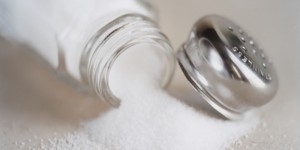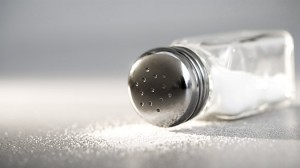A little too salty
“There must be something strangely sacred in salt. It is in our tears and in the sea.” ― Kahlil Gibran
Described as “an essential element in the diet of humans,” salt is one of the most common food preservatives, and a mineral found stored in almost every kitchen world-wide. Throughout history, salt has been used as medicine, an industrial tool, and even as currency.
found stored in almost every kitchen world-wide. Throughout history, salt has been used as medicine, an industrial tool, and even as currency.
Fairy tales and historical stories are littered with references to salt. Magical powers and royalty are often associated with this commonplace mineral.
We throw salt over our shoulder for luck, and tell tales like those of the Pearl Princess, who likened her love for her father to salt.
“I do not like even the best food without salt. Therefore, I love my father like salt.”
While in Salt Mountain, at the youngest son, Ivan’s wedding, the giant Deep Wader offers the following blessing to the bride and groom; “May the salt of the sea bring you good luck, good fortune and good health.”
And the salt-laden stories continue.
Besides the magic and mystical connotations of salt, there’s no denying it adds flavour to our food and is key to human survival. A person who weighs 50 kilograms requires the equivalent of seven tablespoons of salt at all times in order for the body cells to function.
In spite of this, a recent study from Harvard University has shown excessive salt consumption is responsible for 1.65 million deaths globally each year (attributed mainly to sodium).
Collating data from 66 countries world-wide, the study linked excess salt to an increased risk of cardiovascular disease.
The Sydney Morning Herald (SMH) recently reported, “Limitations aside, there is no doubt we (Australians) consume too much salt.”
Nutrition Australia reports an adequate salt intake required for survival ranges from between 1.15 – 2.4 grams, while the average Australian adult consumes around 10 grams per day – more than nine times the required intake!
VicHealth CEO, Jerril Rechter explained to the SMH that a five-year study examining more than 120 illness-prevention measures identified salt reduction as one of the most effective ways to save future lives.
 “Salt is linked to strokes, heart disease, high blood pressure, gastric ulcers, stomach cancer and more than 20 other health problems,” he said.
“Salt is linked to strokes, heart disease, high blood pressure, gastric ulcers, stomach cancer and more than 20 other health problems,” he said.
So too much salt can kill us, right? But not enough can do the same?
The question then is, how much salt should we safely consume?
Dr Robert Grenfell, cardiovascular health director for the National Heart Foundation of Australia, suggests “We need to reduce our salt intake by 30 per cent, if we’re to reduce our risk of heart disease.
“Previous research has shown that reducing our intake of sodium from processed foods by just 15 per cent over 10 years could stop 5,800 heart attacks and 4,900 strokes per year.”
Nutrition Australia argues for a slightly larger reduction, setting a ‘Suggested Dietary Target’ of 1600mg of sodium, equivalent to 4 grams of salt per day, for an Australian adult – an almost 50 per cent reduction on the average Australian adult’s current salt intake.
To meet the target, Nutrition Australia advocates a diet rich in fresh fruit, vegetables and nuts together with lean fresh meat or fish (no added salt), and recommends avoiding processed foods which are often laden with salt.
